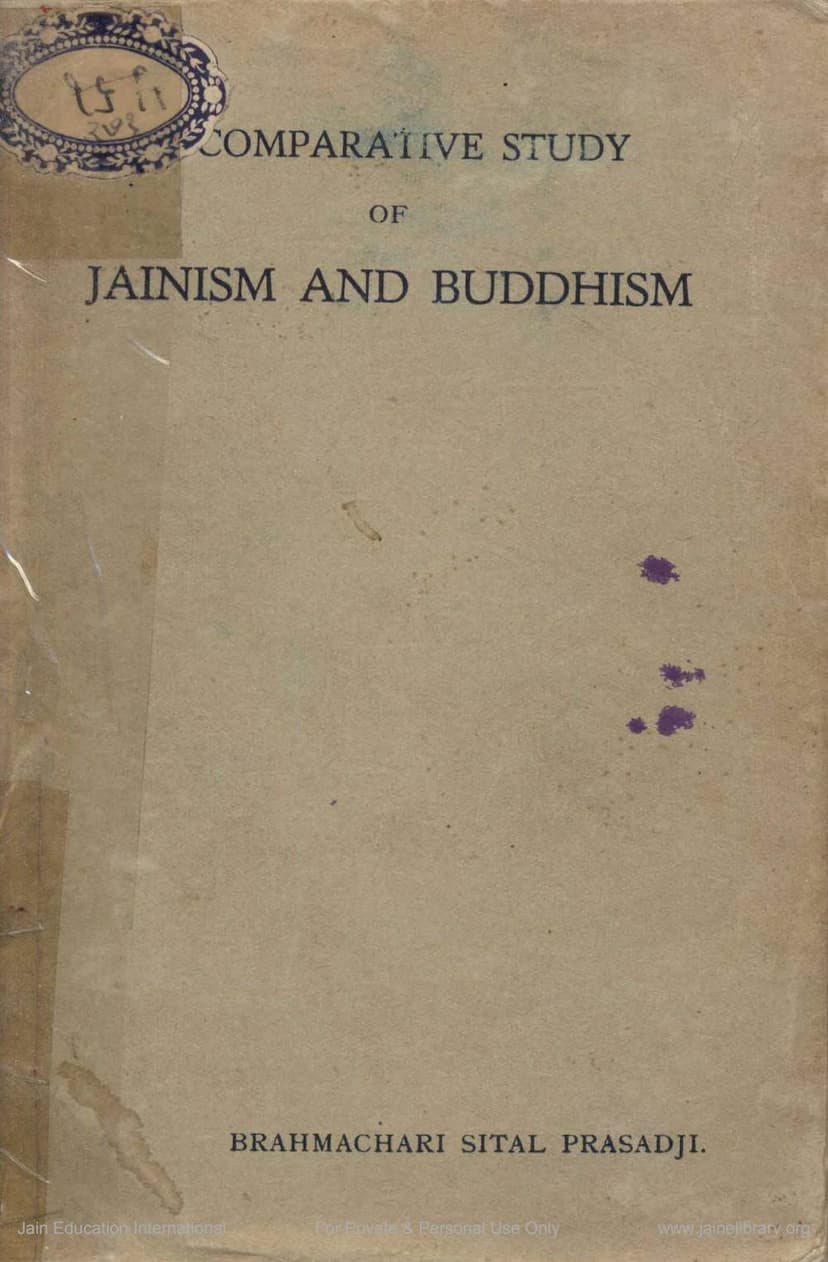Comparative Study Of Jainism And Buddhism
Added to library: September 1, 2025

Summary
This document is a comparative study of Jainism and Buddhism authored by Brahmachari Sital Prasadji and published by The Jaina Mission Society in Madras. The author aims to demonstrate the significant similarities between the two religions, suggesting a common origin.
Key Themes and Arguments:
- Nirvana/Moksha: The book argues that the concept of Nirvana in Buddhism is not annihilation, as often perceived, but a positive, indescribable state of the soul, akin to Jainism's Moksha. Both religions describe this state with similar attributes: eternal, blissful, peaceful, and free from suffering and karma.
- Existence of the Soul: While Buddhist literature may not explicitly detail the soul (Atman), the author contends that its descriptions of Nirvana and the path to it indirectly affirm the existence of a pure, conscious soul. Jainism, in contrast, directly elaborates on the soul's nature. The author highlights Buddha's silence on metaphysical questions and his emphasis on self-realization as evidence of a belief in the soul.
- The Path to Nirvana/Liberation: The book equates the Buddhist Eightfold Path with Jainism's Three Jewels (Samyak Darshan, Samyak Jnana, Samyak Charitra). It breaks down how the components of the Eightfold Path correspond to the principles within Jain philosophy, emphasizing practices like right view, right knowledge, right conduct, self-control, meditation, and the abandonment of desires, passions, and ignorance.
- Karma and its Fruits: Jainism's detailed explanation of karma as fine material particles (pudgala) that bind the soul and produce effects is presented. The author suggests that Buddhist literature, though less explicit, contains passages that allude to a similar material understanding of karma, which obscures the soul and can be shed through spiritual practice. The eight types of karmas in Jainism are detailed.
- Ahimsa (Non-violence): Jainism's central tenet of Ahimsa is presented as also being a core principle in Buddhism. The author discusses the Buddhist prohibition of harming living beings, including vegetables and consuming meat. While acknowledging some ambiguities in Pali texts regarding flesh-eating, the author stresses that older Sanskrit Buddhist literature, like the Lankavatara Sutra, explicitly condemns it. This is compared to Jainism's strict adherence to Ahimsa across all sentient beings, including the immobile ones (like plants).
- Syadvada (Many-sidedness): The Jain doctrine of Syadvada, which states that truth can be viewed from multiple perspectives, is presented as being implicitly present in Buddhist statements that appear contradictory but are true when viewed from different angles.
- Solitariness and Self-Effort: Both religions emphasize the importance of solitude for meditation and self-concentration and stress that liberation is achieved through one's own efforts, not through divine grace.
- External Conduct: The author notes that while the internal philosophy of Jainism and Buddhism is largely the same, there are differences in external conduct, particularly regarding the monastic rules. Buddha's practice of asceticism (nakedness) is compared to Digambara Jain practices, while his later adoption of the "middle path" and acceptance of clothing are likened to Svetambara Jain practices.
Overall Argument:
Brahmachari Sital Prasadji meticulously compares various doctrines and practices of Jainism and Buddhism, drawing upon numerous quotations from their respective scriptures. The central thesis is that despite superficial differences, the core philosophical teachings of Jainism and Buddhism are remarkably similar, stemming from a common ancient Indian spiritual tradition. The book advocates for mutual understanding and friendly relations between the followers of these two religions based on their shared fundamental principles.